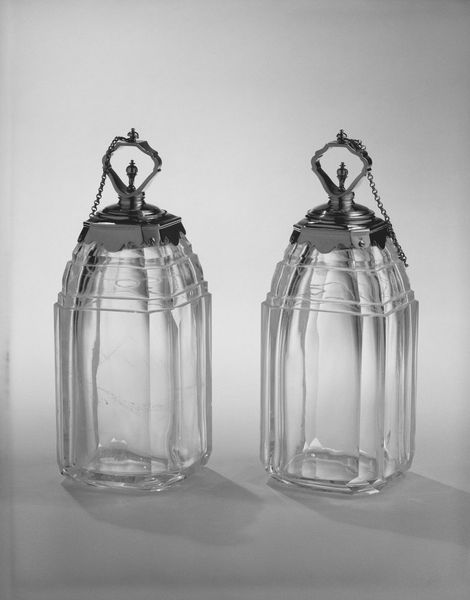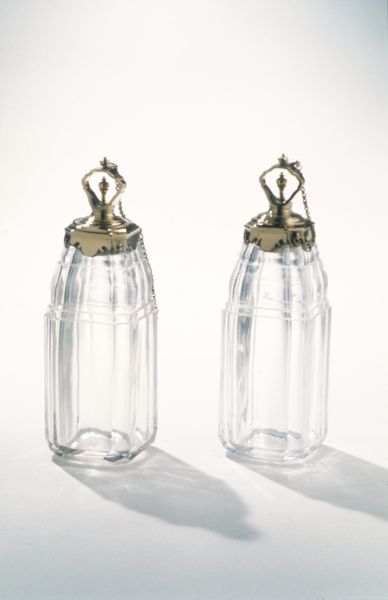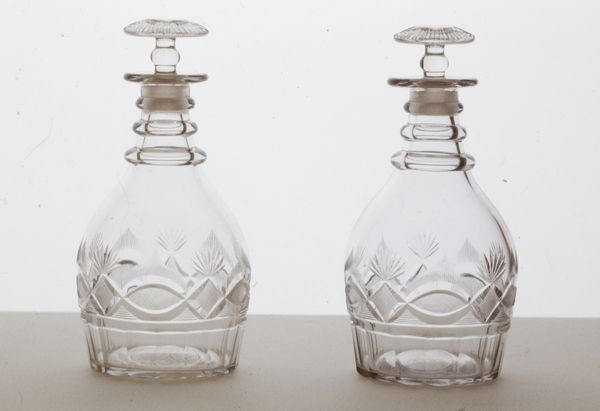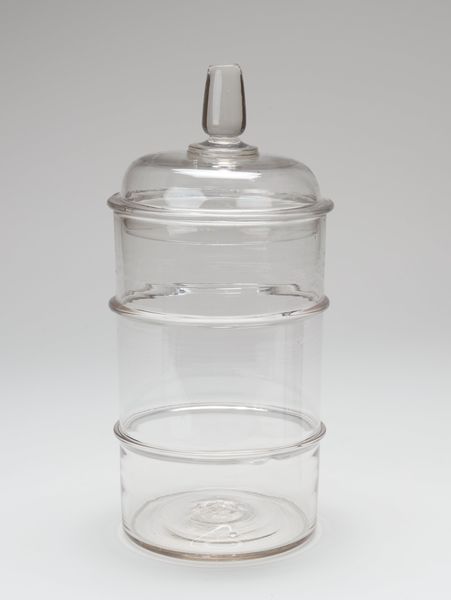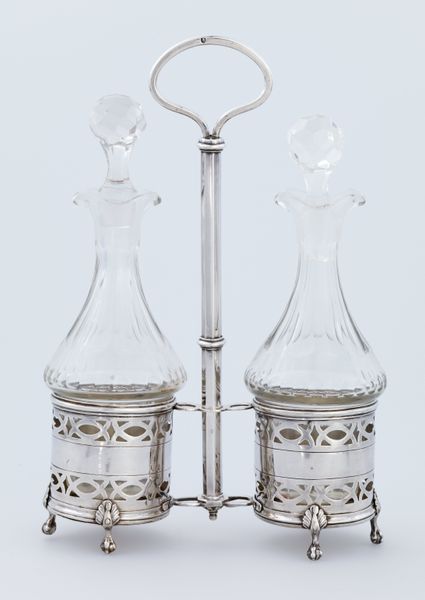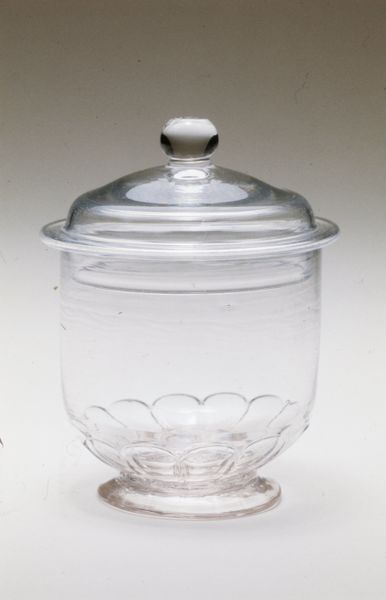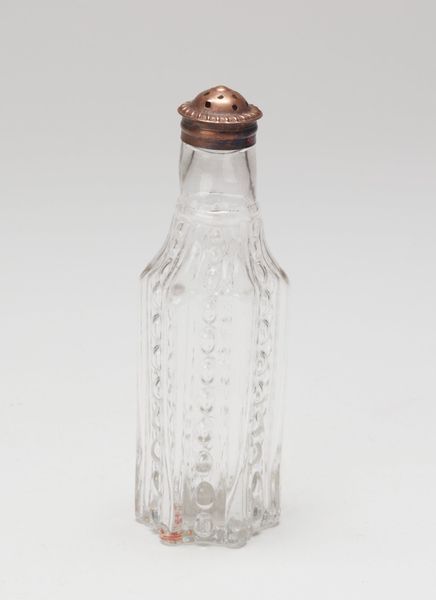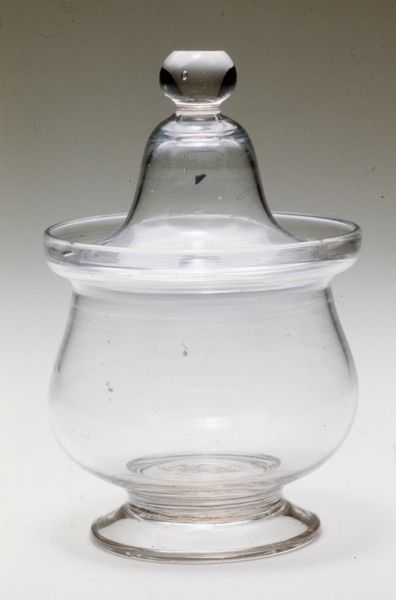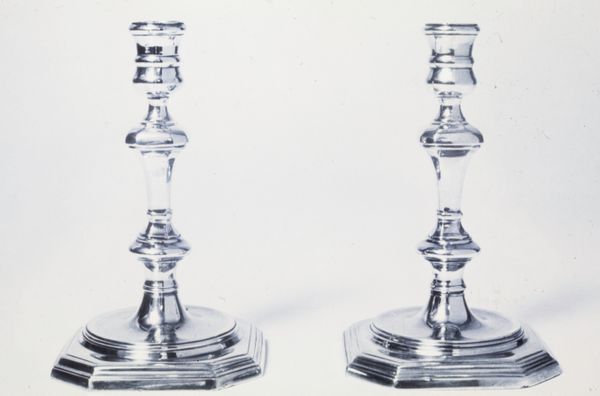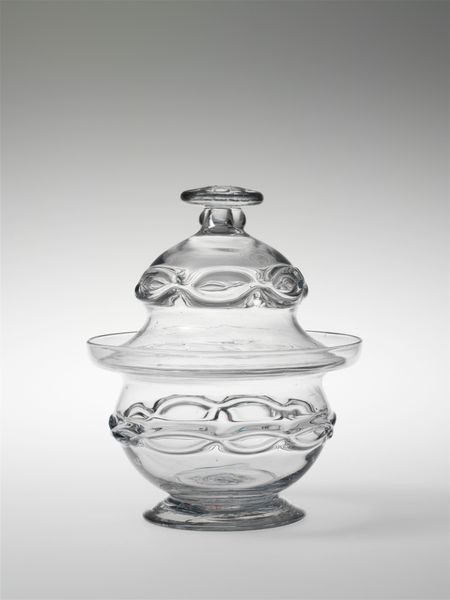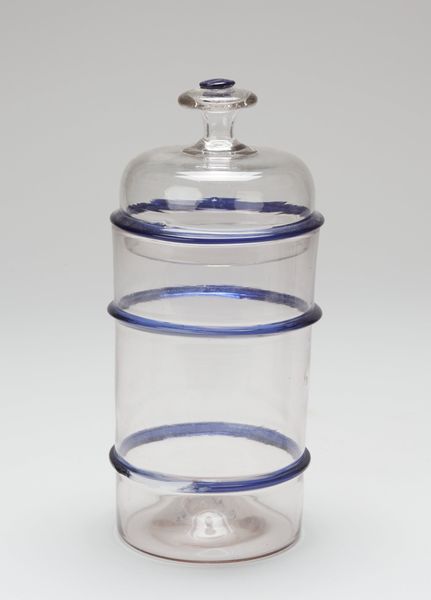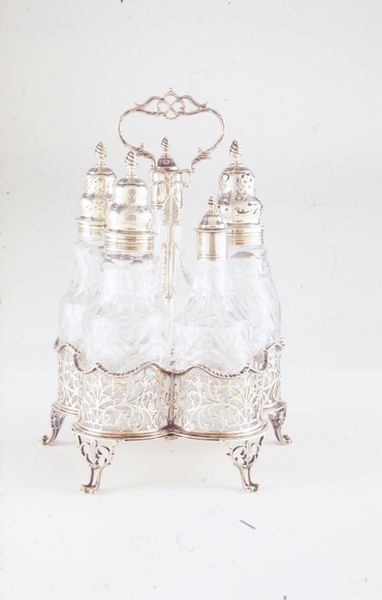
Perfume bottle (one of six) (part of a set) 1728 - 1730
0:00
0:00
ceramic, glass, sculpture
#
baroque
#
ceramic
#
glass
#
sculpture
#
ceramic
#
decorative-art
Dimensions: Height: 5 1/2 in. (14 cm)
Copyright: Public Domain
Curator: At first glance, I see purity and delicacy. It’s like gazing into still water, but rendered in elegant form. Editor: Indeed. What you're seeing here is actually one of six perfume bottles that were part of a larger set crafted between 1728 and 1730. The artisan was Louis Mailly, a master of decorative arts working during the Baroque period. It blends both glass and ceramic sculpture, showcasing an ornate sensibility typical of the time. Curator: So it wasn't solely about function, but communicating status and values? Was there a conscious attempt to evoke senses beyond just smell? Editor: Absolutely. Think of the courts of Louis XV – perfume wasn’t merely a pleasant fragrance, but an intrinsic part of identity and presentation. The elite deployed scent as a powerful signifier of wealth, hygiene, and even political allegiance. It served to assert their position within rigid social structures, using adornment as a visual and olfactory declaration. Curator: Which reminds me how gendered fragrance was, and perhaps still is. Did particular scents signal roles and behaviors that were imposed upon women? Or, even imposed upon men at court? Editor: Undoubtedly, the politics of perfume cannot be divorced from the gender norms of the period. Heavily floral scents, for instance, were often associated with femininity, while muskier tones could signify masculinity – these perfumes effectively enforced or reinforced prescribed gender roles and the behaviors of elite men and women. Consider it a form of embodied, scented governance. Curator: These aren't mere decorative objects; they’re relics that hold historical power. It compels me to wonder how the use of perfume shifted from aristocratic excess to mass consumption – what continuities remain in its power? Editor: It’s fascinating to ponder. These bottles offer an interesting glimpse into the past while inviting crucial reflections on present-day issues of identity, societal hierarchies, and the subtle politics embedded within the culture of consumerism. I find that these objects continue to inspire reflection and dialogue on the enduring intersectional importance of art history with current issues.
Comments
No comments
Be the first to comment and join the conversation on the ultimate creative platform.
